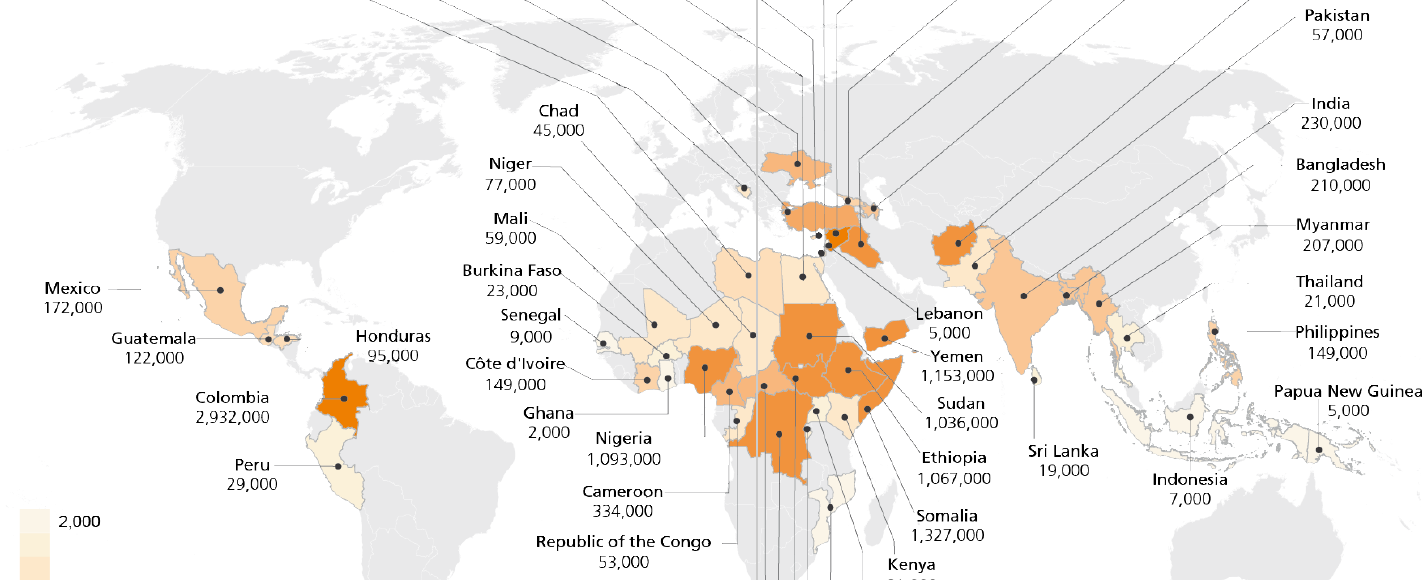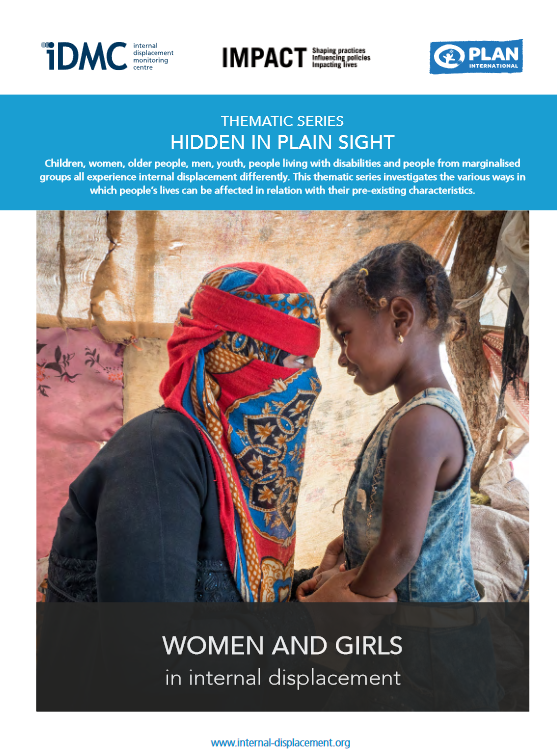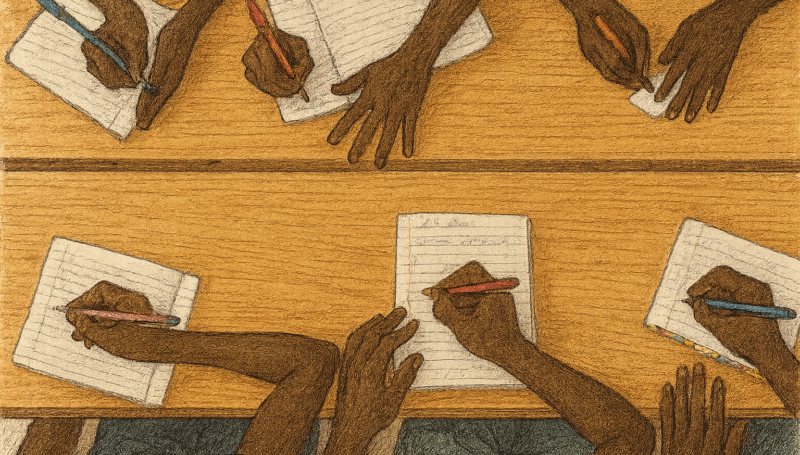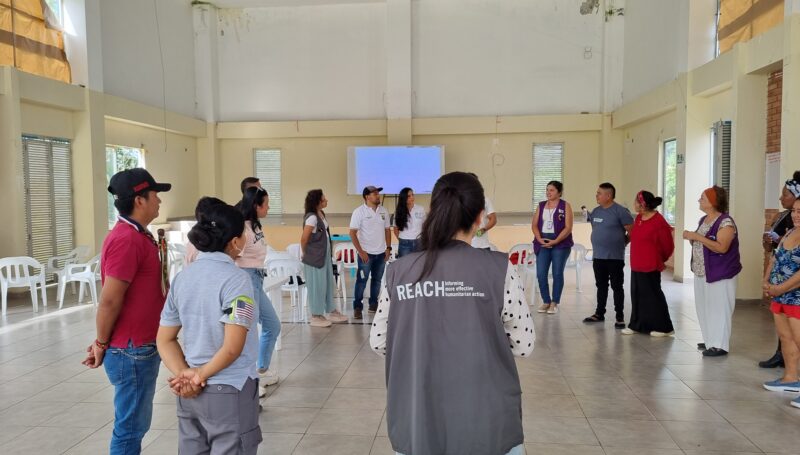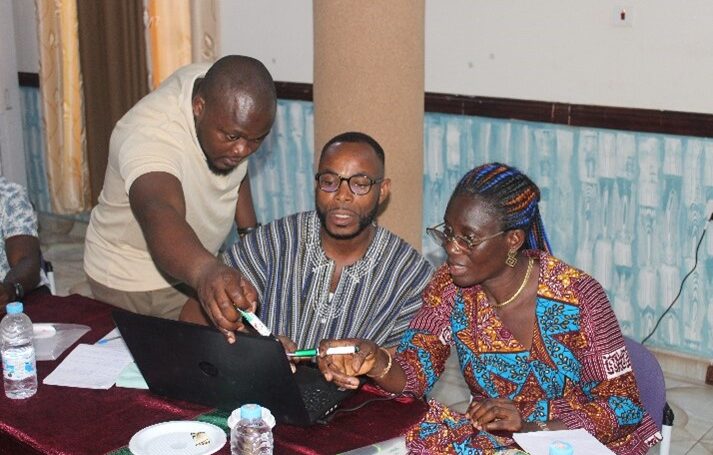IDMC’s brand new foundational study on the situation of women and girls in internal displacement, written in collaboration with IMPACT Initiatives and Plan International, showed that over half of the 41 million people in a situation of internal displacement worldwide were women and girls. Yet whilst the burden of displacement seems to be shared equally among men and women in numbers, the actual impacts and the negative repercussions of living in internal displacement seem to affect women more than men, particularly in regards to livelihoods, security, health, and education. Women are not only more vulnerable to certain impacts of displacement, they are also more likely to become internally displaced in the first place. What does this mean? According to the “Women and Girls in internal displacement” report, more research is needed to investigate the extent to which women are at greater risk of displacement, under which particular conditions they suffer from internal displacement more than men, and how these ongoing harmful risks can be mitigated.
Crucial to push for a better representation of women and girls in internal displacement
Knowing how many women and girls are displaced, how old they are and to understand the conditions they live in is essential if the humanitarian and development community is to provide them with the right resources to meet their specific needs. Christelle Cabazat, Senior Researcher at IDMC and lead author of the report, explains that “the objective here is to reassert the importance of collecting more sex and age disaggregated data so that we can plan more tailored support for these different groups of Internally Displaced Persons (IDPs), rather than offering blanket approaches that would fail to support them adequately.” This is further echoed by Peggy Henery, Senior Research Design & Data Officer at IMPACT Initiatives, and one of the main contributors to the report, who adds that “on a global scale, gathering specific information on girls and women and filling strategic information gaps regarding their needs and vulnerabilities is often a second-tier consideration and very rarely a priority. Yet the findings from the various assessments we fed into the report clearly show the need to zoom-in and to focus on women and girls in certain contexts where the crisis-wide response could greatly benefit from more gender-based analysis.”
The main reason for this added focus is that displacement reinforces pre-existing discrimination and socioeconomic disadvantages that women suffer from. Hence close scrutiny of the mechanisms which perpetuate these inequalities in situations of displacement is necessary for them to be overcome and for women’s conditions to improve. To achieve this the report identified the specific challenges that affect women- claiming that addressing these challenges and their negative repercussions is both a humanitarian and a development concern. The goal? To be able to fight against the inequalities across all the sectors of daily life where women suffer more than their male counterparts in internal displacement.
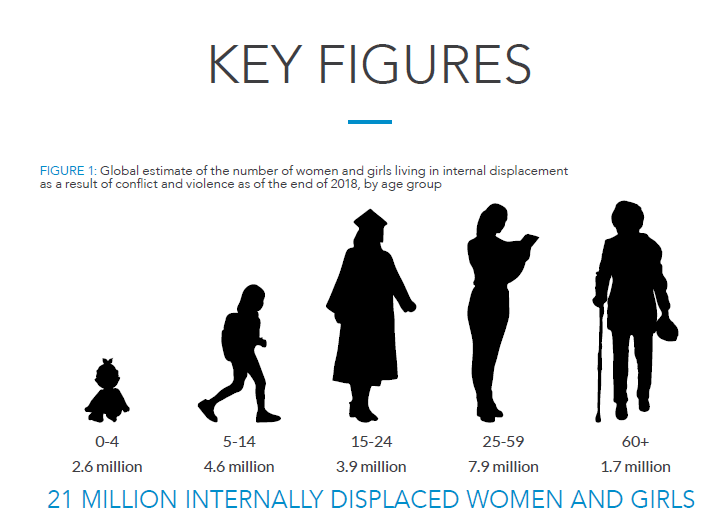
Key figures from the report show the staggering number of internally displaced women and girls, as a first and foremost argument for the need to focus more on their needs and to stop considering Internally Displaced Persons (IDPs) as one homogenous group with the same needs and vulnerabilities.
Women are generally at a disadvantage regarding livelihoods, security, health and education
Without seeking to retrieve the right level of information on the actual conditions of women and girls in a situation of internal displacement, the global humanitarian and development community is at risk of completely missing the larger picture of inequality that is unfolding right before their eyes. Closer scrutiny at the research and the available data provided by IMPACT Initiatives and Plan International enabled IDMC’s research team to show the extent to which these inequalities were spread out across key sectors. The analysis was enabled by the fact that IMPACT, via its data collection initiative REACH, collected at least some sex-disaggregated data on 144 of the 198 research cycles (73%) conducted thus far on internal displacement, prompting Christelle Cabazat to remind that “joining forces for the publication of this report gives it much more weight than had it been published alone. The data collected by REACH is amongst the most useful, and of the highest quality in the area of internal displacement enabling a common understanding of the global situation.” The need for reliable evidence to feed in key reports such as this one is illustrated by Nayana Das, IMPACT Research Design & Data Manager, who confirms that “it is crucially important for findings from existing assessments to figure in foundational studies such as the present one by IDMC. It enables our data to contribute towards global narratives about the experiences of women and girls in internal displacement and it gets the conversation going, at a global level, with the right level of clarity and information.”
Livelihoods
Internal displacement often leads to the deterioration of living standards because IDPs tend to lose most of their assets. They also struggle to find new livelihoods, and women face even greater challenges. The report cites an assessment conducted by UN Women and REACH in 2019 in Iraq which shed light on specific challenges women face in accessing and maintaining decent livelihoods.
Security
Internal displacement heightens the risk women and girls face of gender-based violence because it separates them from their communities and sometimes the families that might otherwise protect them.
Living in unfamiliar surroundings and barriers to social integration poses new threats to all IDPs, and particularly women and girls. Over 25% of surveyed internally displaced households in Iraq and 15 percent of those in internal displacement settlements in Somalia said women and girls reportedly avoided particular locations because they felt unsafe.
Health
Women and girls have specific health needs that can be more difficult to meet during displacement. This may be the result of several factors including the limited availability of services and facilities, stigma related to sexual and reproductive health, a lack of child-friendly and gender-sensitive information, and financial capacity.
REACH assessments found that over 50% of internally displaced in Somalia, and 34% in Afghanistan reported pregnant women giving birth outside healthcare facilities.
In Iraq, 25% of internally displaced households assessed said that women in their households had no access to any specialized healthcare.
Education
REACH found that in Afghanistan, 76% of internally displaced girls between ages 13-18 were not enrolled in education, which is 20% more than boys. In Iraq, 25% of girls miss school against 19% of boys. Similarly, in Somalia, only 22% of girls over the age of 5 have ever attended school, compared with 37% of boys.

Key findings extracted from the report show inequalities between men and women in the healthcare and education sector.
Where does that leave us and what are the future steps?
“We hope to raise the awareness of governments of affected countries and their partners, including international organisations and non-government organisations that they can use the report’s findings for advocacy, fundraising, and perhaps more importantly, planning purposes,” explains Christelle Cabazat, adding that “more data collection exercises such as the ones conducted by IMPACT, in more locations, and with an increased coverage, would by very useful to improve gender-based analyses at the regional and global levels all the whilst improving crisis-wide responses at the local level for women and girls.” A process that Peggy Henery readily agrees with stating that “we definitely need more data to enable more, and better, gender-based analysis. From a data collection point of view, it’s really about building awareness and motivation within the humanitarian and development community to organically seek information on girls and women and mainstream the implementation of programs that address their specific needs.”
Left unaddressed, the negative repercussions of the impacts of internal displacement on girls and women reinforce each other in a vicious circle of vulnerability.
The findings present in the report created the very basis for a set of concrete recommendations for governments, humanitarian, and development actors to develop better policies and programmes for displaced girls and women:
- Expand the collection of data on IDPs disaggregated by sex and age, and invest in gender-focused analyses;
- Conduct assessments of displacement risk including a gender perspective;
- Encourage the systematic use of gender analyses based on data disaggregated by sex in humanitarian response plans;
- Consider not only the short-term but also the medium and long-term impacts of displacement on women and girls through humanitarian and development plans;
- Raise global awareness of the scale and severity of women’s and girl’s displacement;
- Encourage the meaningful participation of displaced women and girls in the design, implementation and evaluation of programmes intended to support and protect them.
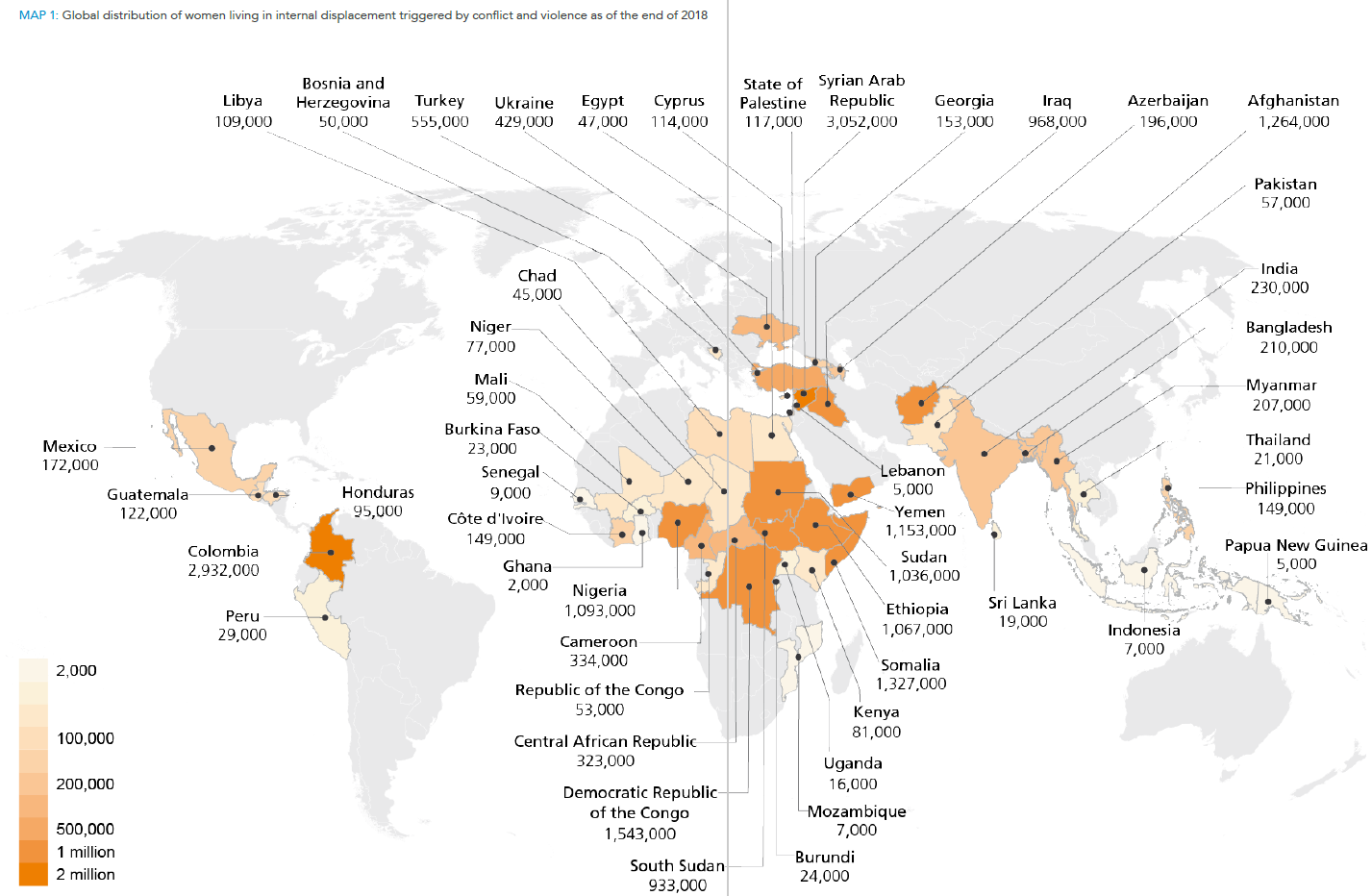
Global estimates from the report show the geographical distribution of where women and girls find themselves in situations of internal displacement.
It is of utmost importance that we remember, for International Women’s Day, the need to include women and girls who are vulnerable, and deprived of opportunities to grow, in situations of internal displacement in our thoughts and in our actions.
For more information
View the full report:
Contact:
Emmanuel Gamard
Communications & Dissemination Officer
[email protected]





